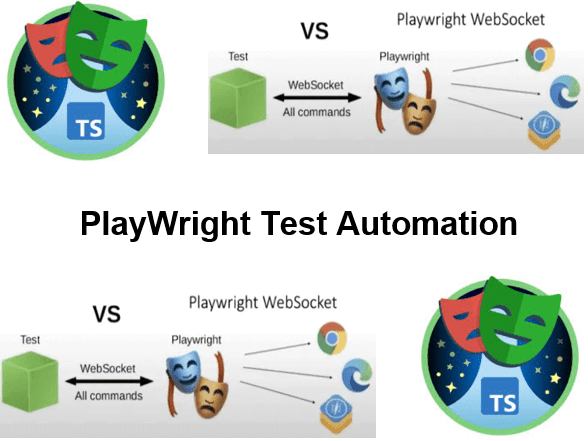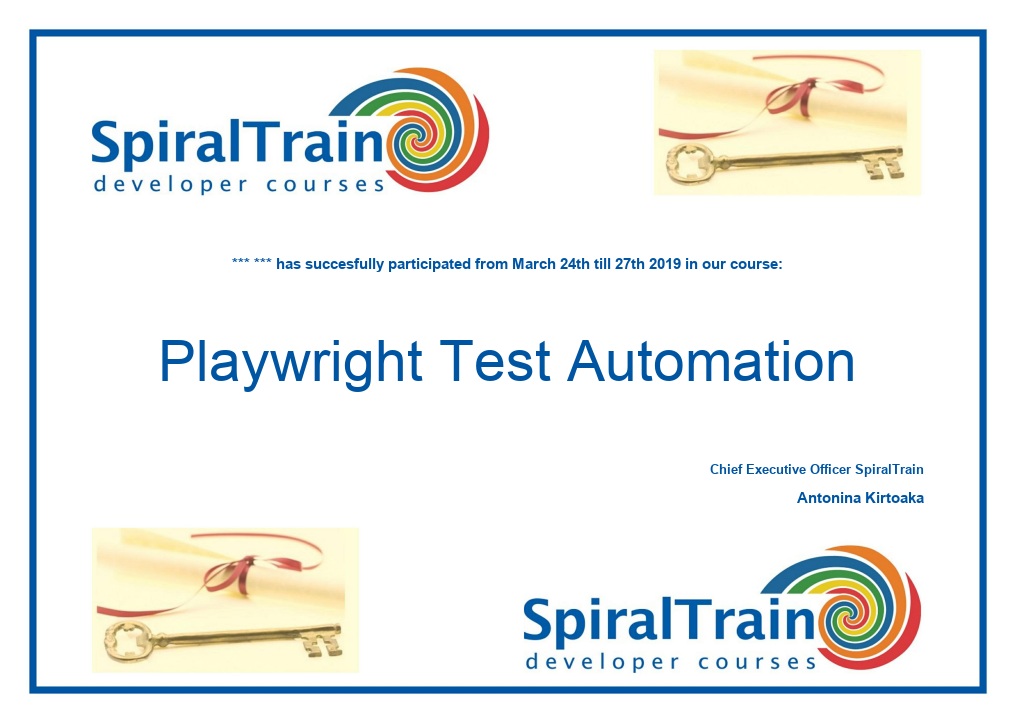-
Learning by doing
-
Trainers with practical experience
-
Classroom training
-
Detailed course material
-
Clear content description
-
Tailormade content possible
-
Training that proceeds
-
Small groups
In the course Playwright Test Automation, participants learn to use the Microsoft Playwright Framework to automatically test the UI of modern web applications. Playwright enables the creation of reliable, fast, and scalable UI tests.
The course starts with an introduction to Playwright, a modern web testing tool. It compares Playwright with Selenium and Cypress, explains how to install it, and demonstrates browser contexts, auto-waiting, introspection events, and web-first assertions. Participants also learn about Playwright Inspector, multi-language support, and using the tool efficiently.
In this module, participants learn how to write tests using Playwright’s syntax and structure. The difference between using the test library and raw API is discussed. Various locator strategies including CSS, XPath, and role-based locators are explained. The module also covers writing assertions, using the trace viewer, and debugging with VS Code.
This module focuses on simulating user interactions such as button clicks, text inputs, and handling checkboxes and dropdowns. It also covers modal dialogs, alerts, pop-ups, file uploads, and working with multiple browser contexts and network requests.
Participants learn what fixtures are and how to use them to set up a consistent test environment. Built-in and custom fixtures are covered, including overriding fixtures and using setup and teardown. The module also explains the differences between fixtures and hooks like beforeEach and afterEach.
This module teaches participants how to perform API testing with Playwright. They will make GET, POST, PUT, and DELETE requests, insert headers, and validate JSON payloads and response codes. It also covers combining API and UI tests, parallel execution, and testing authentication flows.
The course concludes with advanced topics such as test parameterization, using CSV files, passing environment variables through .env files, and managing timeouts and retries. Participants also learn to generate test reports and snapshots and perform visual regression testing.
The course PlayWright Test Automation is intended for testers, developers and QA engineers who want to use PlayWright for end-to-end testing of web applications.
Basic knowledge of programming in for example JavaScript, TypeScript or Python. Some experience with test automation is beneficial for understanding.
Demos and case studies led by the trainer are interchanged with presentations and practical exercises.
After successfully completing the course, participants will receive a certificate of participation in PlayWright Test Automation.

Module 1: Intro Playwright |
Module 2: Writing Tests |
Module 3: UI Interactions |
|
What is Playwright? Comparison with Selenium Comparison with Cypress Installing Playwright Browser Contexts Waiting for Elements Auto Wait Introspection Events Language Bindings Playwright Inspector Web-First Assertions |
Test Syntax and Structure Test versus Raw API Out of Process Running Locating Elements CSS Locators XPath Locators Role-based Locators Page Interactions Writing Assertions Trace Viewer VS Code Debugger |
Page Interactions Button Clicks Text Insertions Check and Radio Buttons Working with Dropdowns Modal Dialogs Handling Alerts Handling Pop-Ups Multiple Browser Contexts Handling File Uploads Network Requests |
Module 4: Fixtures and Hooks |
Module 5: API Testing |
Module 6: Advanced Topics |
|
What are Fixtures? Establish the Environment Built-in Fixtures Benefits of Fixtures Custom Test Fixtures Overriding Fixtures Setup and Teardown Differences with Hooks BeforeEach Hook AfterEach Hooks |
Making API Requests GET and POST Requests PUT and DELETE Requests Validating Response Codes Inserting Request Headers Validating JSON Payloads Validating Response Codes Combining API and UI Testing Parallel Execution Authentication Testing |
Test Parameterization Tests via CSV files Passing Environment Variables .env Files Handling Timeouts Failures and Retries Test Reports Generating Snapshots Comparing Snapshots Performing Visual Regression |
